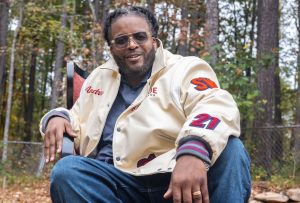For years, I blamed it on those richly royal blue suede high heel pumps. The ones with the ridiculously tall, spiked heel and absurdly pointed toe. I was 22 when I bought them, 36 when I donated them to the Salvation Army.
Those shoes had a history, one that made me smile. I was a young sports reporter on assignment at USA Today in Washington, D.C. I had a terrific blue and black wool suit that Mama had made which matched them perfectly. The first time I wore that outfit, I was covering the Cotton Bowl in Dallas, Texas and wore it to a coaches’ press conference.
I felt so grown-up and glamorous. Those shoes were what I like to call a “chat maker” because both men and women, often strangers, would comment on them and a conversation would begin.
One day I was cleaning my closet. You know those days. You aren’t thinking clearly, the job becomes too time-consuming, so you start tossing away things that, in your right mind, you would never discard. Those fantastic, still perfect blue shoes went into the donation pile.
Later that afternoon, I hauled several bags down to the Salvation Army, dropped them off, took my contribution receipt and headed home. It was a couple of hours before the regret set in. It grew stronger to the point that I couldn’t sleep.
Finally, I promised myself, “First thing in the morning, I’ll go back and retrieve them. I’ll even buy them if necessary.”
But the shoes were gone. “One of our volunteers saw them as soon as they came in and bought them.” I was sick, a symptom that has lingered for many years to the point that it makes it hard for me to give away something. I’m afraid I’ll regret it.
At times, I have thought I had a bit of hoarder in me or that I’m indecisive or that I can’t move on without looking back, but now I know better. The point of clarification that turned into crystallization for me came when it was time for Tink and me to merge our furnishings, requiring me to purge some things from my life to make room.
I discovered that it wasn’t the affection that I had for a sofa or a lamp but rather the journey and how it detailed the roads of my life.
Just like the shoes which represented my first big sports reporting assignment — a week covering the Cotton Bowl — and the months I spent at USA Today.
The grandfather clock that stands in the corner of the living room reminds me of youthful determination. Though I had a full-time job that paid — barely — the monthly expenses, I took a part-time job cleaning a wing of an elementary school every afternoon. I vacuumed and scrubbed the bathrooms where six-year-olds had been sick on the floors, walls and everything in-between. I netted $80 weekly and saved every penny to buy that clock.
It reminds from where I’ve come and where I can return if necessary to make a living. It cannot go.
In the closet are dozens of suits in nice fabrics that I sewed when there was no money to buy clothes and when I could make three beautiful suits or dresses for the cost of one. They are meticulously sewed and hand-finished with satin linings and covered buttons.
I need to keep every one for two reasons: When I depended on the workings of my hands to carry me through, those hands did it beautifully. Too, it brings forth gratitude that I no longer have to set up my sewing machine in my kitchen and sew long into the night just to have a new dress.
It’s not the materialism, I realize, that makes these items valuable. It’s that they ground me and keep me from thinking too much of myself. The less you think of yourself, the more you can accomplish.
That’s priceless.
[Don’t miss “The Town That Came A-Courtin’,” the television movie based on Ronda’s best-selling novel, airing Jan. 19 at 7 p.m. on UP.]












Leave a Comment
You must be logged in to post a comment.